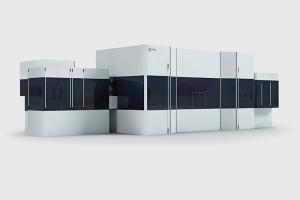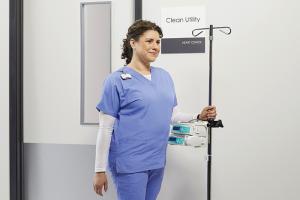Video security systems see continued advances
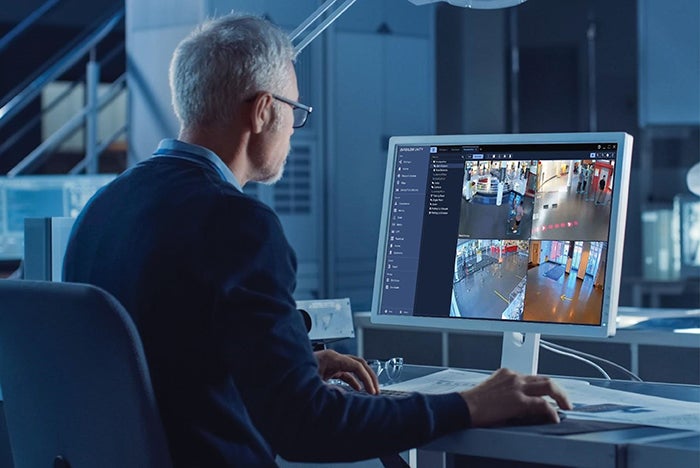
Image courtesy of Motorola Solutions
Hospitals pose many challenges to manufacturers of video security systems. However, the growth of technologies such as the Internet of Things (IoT), infrared (IR) sensors and software analytics has improved the capabilities of these systems, enabling health care facilities managers to improve safety for patients, staff and visitors.
Beyond digital threats, hospitals struggle with physical security challenges. With multiple entrances and open lobbies, implementing security checkpoints is difficult. Also, security teams must respond to internal and external threats while maintaining a welcoming atmosphere for patients, staff and visitors.
Enabling greater integration of a hospital’s security system is another challenge, according to Doug Coppolla, senior director at Honeywell Building Automation in Charlotte, N.C. “Most hospitals have older systems that are not fully integrated — from connected video management to access control. This makes it difficult to ensure complete visibility and control throughout the facility, and especially across a network of buildings,” he says.
New capabilities
More specifically, IoT has increased the intelligence and usability of video security systems. It provides the ability to visualize the data that cameras are generating, such as the number of parking spots available or people in a lobby. Analytics also supports searches for vehicle license plate numbers or makes and models, according to John Wekenborg, team lead for sales solution engineering at Bosch Security and Safety Systems in Fairport, N.Y.
“In addition, operators can request the cameras to look for specific people attributes, such as clothing color or the presence of a backpack,” Wekenborg notes. “With visual firearms detection, the cameras can detect and report in real time that a brandished firearm is present. They also can identify unauthorized access and unattended objects and send instant alerts to security staff.”
Additionally, advances in analytics have reshaped threat detection by increasing accuracy and reducing false alarms, according to Mark Feider, national director for the enterprise sector at Genetec in Montreal. “The latest camera analytics give more accurate identification of potential threats, enabling systems to leverage metadata for search capabilities,” says Feider.
Hospitals generate massive amounts of security data every day. “Without the right tools, security teams can struggle to distinguish between routine activity and potential threats,” says Greg Colaluca, general manager at Intellicene in Melville, N.Y. “New security solutions help filter critical alerts, verify incidents and ensure that security teams can respond to real threats. Another advance is event categorization, which enables security teams to prioritize alarms based on urgency rather than reviewing every alert. This is particularly valuable in high-risk areas, such as emergency rooms, pharmacy storage and behavioral health units, where immediate response is critical.”
The use of protocols such as message queuing telemetry transport (MQTT) enables efficient communication between IoT devices, including cameras, according to Justin Lavoie, vice president of channel development at Schneider Electric in Boston. “MQTT is particularly effective for environments where bandwidth is at a premium because it’s designed for low-bandwidth, high-latency networks. This means video security systems can operate more efficiently, sending alerts or data only when necessary,” Lavoie explains.
Another key development, IR technology is seen in almost every camera series available to hospitals, according to Dave Stolerow, national business manager for security at Siemens Smart Infrastructure USA in Buffalo Grove, Ill. “IR is an essential feature for health care facilities to provide high-quality digital images within low-light or nighttime conditions,” Stolerow says. “The technology allows cameras to capture clear video in near darkness.” IR sensors also are used for motion detection and intrusion detection.
More hospitals are using remote monitoring and management to oversee multiple facilities, according to Alex Castaneda, corporate vice president for video security and access control at Motorola Solutions in Chicago. “Centralized control platforms and cloud-based solutions enable real-time monitoring, incident response and system maintenance from a unified interface,” Castaneda says. “Modular designs, cloud storage options and intelligent video analytics contribute to cost-effective solutions that can be easily scaled to accommodate changing security requirements.”
Finally, off-campus facilities and clinics have their own needs, because they have fewer security resources, less staff dedicated to on-premises monitoring and varying hours of operations. “Comprehensive platform solutions are becoming essential as these facilities scale in number, necessitating stronger cohesion between managers, security software and camera hardware,” Lavoie says.
Platforms and systems
Honeywell Building Automation offers an integrated technology platform that enables multiple layers of security at hospitals. “Having a fully integrated security system, including video monitoring and analytics, can help improve hospital operations,” Coppolla says. “For example, hospitals can enable connectivity between access controls for high-risk areas with video surveillance to capture pre- and post-records of events. Access to a particular room by an unauthorized person triggers a cascade of protocols, alerts and reporting.”
Siemens Smart Infrastructure USA also offers integrated security solutions that combine video surveillance and access control, which enhances situational awareness and reduces response time during emergencies. Artificial intelligence (AI) and machine learning technologies are leveraged to enhance video analytics. These solutions detect unusual activities, such as suspicious behavior or unauthorized access, and notify security personnel.
Siemens also provides cloud video security systems, which offer remote access to video in a flexible and scalable architecture. “Many hospitals are looking to hybrid systems as a cost-effective approach to modernize their security solutions,” Stolerow says. “This allows for new cameras to be stored and managed in the cloud while maintaining and utilizing legacy on-premises systems that hospitals have already invested in.”
The Avigilon video security system from Motorola provides a solution that integrates high-definition video with AI-powered analytics that allow managers to search recorded video, flag unusual activity and generate real-time alerts. In addition, Motorola’s mobile radios enhance incident response by keeping teams connected across campuses.
Schneider Electric recently partnered with IPConfigure in Norfolk, Va., to integrate IPConfigure’s Orchid video management system into Schneider’s EcoStruxure Building platform. Key features include on-premises and cloud options, scalable recording environments and customizable interfaces.
“Orchid supports single- to multi-site configurations locally or via the cloud,” Lavoie says. “It offers solutions for private networks, hybrid cloud or pure cloud configurations. Also, Orchid enables the recording and management of numerous cameras, locations and users through a single interface, accommodating an unlimited scale seamlessly.”
Intellicene offers NowForce and Control as part of a unified security platform. NowForce improves coordination, response times and operational efficiency at hospitals, according to Colaluca. “NowForce automates incident management and dispatch, allowing security teams to respond quickly while reducing manual inefficiencies,” he says. “By integrating mobile response capabilities, real-time alerts and automated task assignments, the system helps hospitals manage security events and critical operations.”
For hospitals looking to enhance situational awareness and video security, Intellicene’s Control provides a video management interface that allows security teams to monitor multiple locations, review footage and manage surveillance from a single platform. “Whether securing pharmaceutical storage, patient care areas or high-traffic entry points, it ensures that hospitals have clear, real-time visibility into their security operations,” Colaluca adds.
Genetec has launched Security Center SaaS, a cloud-based system that enables health care organizations to deploy cloud and on-premises systems in a hybrid approach. The system centralizes monitoring, streamlines hardware deployment and lowers installation costs, says Feider.
Security Center SaaS allows seamless integration of open network video interface forum cameras and direct-to-cloud cameras with flexible storage options while providing a unified platform for security operations center management. Feider adds, “It also offers advanced search capabilities, enabling organizations to leverage powerful analytics across all cameras within their enterprise.”
Camera features
Among new cameras, Motorola Solutions has unveiled the V200 body camera. Its record feature can be activated by push button, documenting situations to help deter unwanted behavior. Activation of its GoLive audio feature engages security personnel, who can access live video and audio and interject via the camera’s speaker. A top display shows connectivity to Wi-Fi and the security monitoring center as well as battery levels.
The X-Series AI camera line from i-Pro in Houston offers privacy features that are important in health care facilities. All i-Pro AI cameras include AI-Privacy Guard, which blurs the faces or bodies of all people in the frame. This creates a redacted stream that can be unmasked by personnel who have approved credentials. The X-Series cameras also support AI on-site learning, so they can be taught to recognize and track objects essential to hospital operations. These data-driven analytics can inform security staff before incidents occur.
Axis Communications in Chelmsford, Mass., has introduced the Axis Q1728 block camera, which features a large sensor to ensure consistent performance in all light conditions, according to Paul Baratta, industry segment development manager. Using a new Artpec-9 feature, the AI-based camera allows users to take advantage of analytics to detect, classify, track and count people and vehicles.
The camera also features a live privacy shield, which offers AI-powered masking, so users can leverage intelligent video while safeguarding people’s privacy. “Cameras like this allow hospitals to maintain a clear, consistent view of activity happening across campus at all times, providing security teams with real-time information and automatic alerts when incidents arise,” Baratta says.
Bosch Security and Safety Systems has introduced the Bosch 3100i camera series, which includes three models: the Flexidome 3100i, Dinion 3100i IR and the Flexidome micro 3100i. The camera series is budget-friendly and discrete with high image quality, day or night, according to Wekenborg. The cameras also include intelligent video analytics professional (IVA Pro) features.
“The Bosch 3100i cameras deliver up to 5-megapixel resolution for highly detailed images, while IVA Pro brings reliable detection of individuals and vehicles,” Wekenborg says. “The high-dynamic range enables one to see details in bright and dark areas of a scene, and built-in IR illumination provides up to 98 feet viewing distance at night.” A built-in secure element with a trusted platform module ensures cybersecurity for device access and data transport.
Advances ahead
Rapid advances in AI and edge-based processing (in-camera) will continue to revolutionize the tools available to secure hospitals, says Adam Lowenstein, Americas product director at i-Pro. “Beyond simply security, these cameras will provide valuable insights into operations and improve safety,” he says.
Baratta predicts increased adoption of body-worn technology in accordance with privacy laws to enhance safety and accountability for staff, patients and visitors. “The cameras themselves will be the key for deterrence, with captured footage used for fast and fair incident resolution,” adds Baratta.
Castaneda predicts that video security systems will become more integrated, intelligent and responsive, offering new capabilities that go beyond detecting and capturing incidents. “Hospitals are already using AI-powered video analytics to detect a range of environmental hazards, allowing staff to respond in real time and address hazards before they cause harm,” Castaneda says.
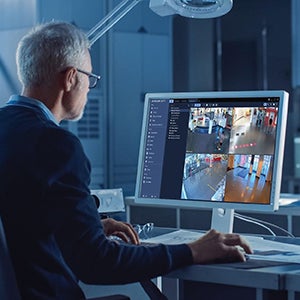
COMPLETE CONTROL
The Avigilon Unity unified video security platform allows for easy management of multiple security systems. Motorola Solutions
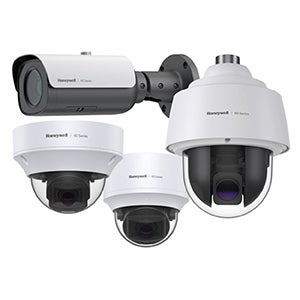
PICTURE PERFECT
The 60 Series IP cameras offer picture clarity, flexible system integration, secure data transmission and easy installation. Honeywell Building Automation
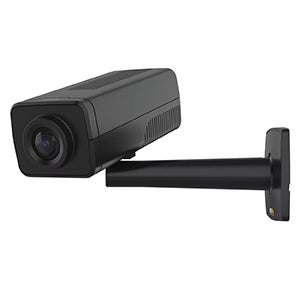
IN FOCUS
The Axis Q1728 block camera delivers 4K resolution at 60 frames per second. Axis Communications
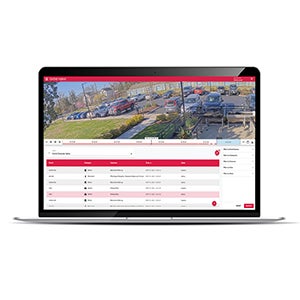
OPTIONS GALORE
The Orchid video management system features on-premises and cloud options, scalable recording environments and customizable interfaces. Schneider Electric
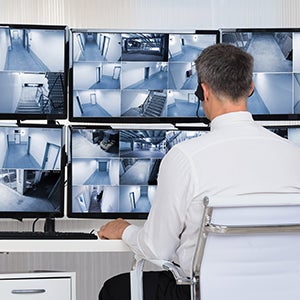
MULTIFUNCTIONAL
Integrated security solutions combine video surveillance and access control, which enhances situational awareness and reduces response time. Siemens Smart Infrastructure USA
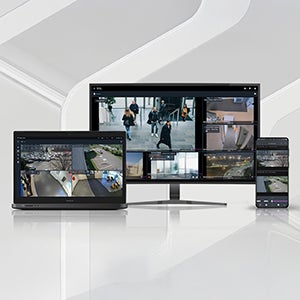
HYBRID SOLUTION
The Security Center SaaS enables hospitals to deploy cloud and on-premises systems in a hybrid approach. Genetec
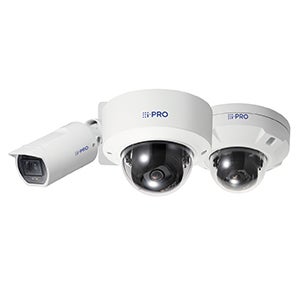
WATCHING AND LEARNING
The X-Series AI camera line offers privacy features and artificial intelligence on-site learning. i-Pro
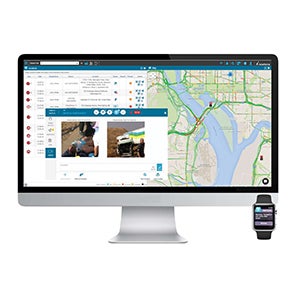
AUTOMATED ACTION
Part of a unified security platform, NowForce automates incident management and dispatch. Intellicene

NO COMPROMISES
The 3100i series of cameras provides a video surveillance solution without compromising video analytics or data security. Bosch Security and Safety Systems
Neal Lorenzi is a Mundelein, Ill.-based contributor to Health Facilities Management.



